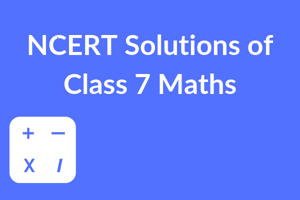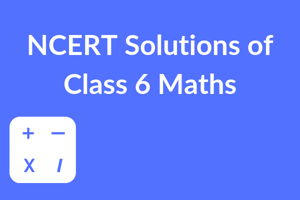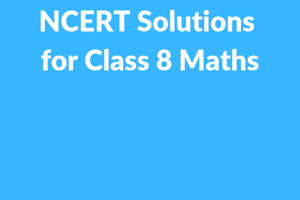Building a strong base in mathematics in the middle-school is very important for mathematics...
Class 6th Maths- An Overview of Important Topics
6th class is when a student is under a transition from primary school to a higher level. They are slowly adapting to secondary education and preparing themselves for high school. While all the classes or grades are important in developing a student’s mind and their various skills, the 6th standard is particularly important as here they are introduced to many new concepts and lessons that will later have a great value in their higher education. Also, in class 6th maths, they are familiar with their senior groups and certain concepts of higher mathematics education.
When we particularly talk about maths, the concepts learnt in the 6th standard go a long way in helping them shape their thoughts and formulate their approach towards any complicated solution. Mathematics, as we know, is a logical subject and simply mugging up the lessons won’t help here. There isn’t anything much that can be mugged up in mathematics. Therefore, students and teachers must focus on understanding and application rather than just scoring high. ‘Class 6 maths’ has some important concepts that can only be excelled at by understanding and not grasping.
Blog Contents
6th class maths syllabus
To begin with, let us first look at NCERT class 6 maths syllabus. The book is divided into various units and chapters. The main topics covered in the 6th class maths syllabus includes Decimals, Exponents, Factors, Multiples, and Prime Factorization, Fractions, Numbers up to 10-digits, Percentages, Ratio, Proportion, and Unitary Method, Addition and Subtraction of Algebraic Expressions, Addition and Subtraction of Integers, Algebraic Expressions, Integers, Bar Graphs, Line Graphs, Construction of Lines and Angles, Introduction to One Variable Linear Equations, Lines, Angles, Multiplication and Division of Expressions, Multiplication and Division of Integers, Perimeter, Area, Pie Charts, Solid Shapes, Surface Area, Volume, Triangles, and Quadrilaterals.
Let us now have a brief look at all these topics and how these are an essential element of the class 6 maths syllabus. Then, beginning with decimals, we will move forward with other topics, including the ratio and proportions, graphs, integers and so on.
Decimals
Decimals are a number set written in conjunction with a dot called a decimal point in between them. The numbers on the left of the decimal point are the integer or full numbers, the decimal numbers on the right. To express the full number and fraction simultaneously, a decimal number system is needed. Here, we can distinguish the entire number from a fraction by putting a “.” called a decimal point. For example, if we need to write 30 rupees and 25 paise numerically, we may use the decimal point to denote this value as ₹30.25. Apart from this situation, there are many other real-life situations where decimal comes to use. A decimal number can be interpreted in two ways. Firstly, read the entire number, then read the “point,” and then read the numbers individually in the fractional section. It’s a simple way to read decimals numbers. The second approach is to read the entire number portion, then “and,” and then read the fraction as we read whole numbers and follow the last digit value.
Along with explaining these basic concepts of decimals to the class 6 maths students, this chapter focusses on decimal concepts such as reading and writing decimal numbers, comparing decimal numbers, rounding decimal numbers, different types of decimal numbers, which include terminating, non-terminating, recurring and non-recurring and other facts related to the decimal number system.
Fractions
Fractions were written in Ancient Rome with words to explain a portion of the total. In India, the fractions were initially written by one number atop another but without a line. Only the Arabs added the line used to distinguish the numerator and denominator. The term fraction comes from the Latin word “fraction,” meaning “to split up.” As the first civilization to study fractions, the Egyptians learned fractions to overcome their mathematical issues, such as sharing, supply, and absence of a metal currency; the concept soon became popular and useful to many other countries for many day-to-day activities.
Fractions are represented as a numerical value in mathematics and can be defined as a part of entire portions. For example, a part of an entire amount may be a part of a sector, and the entire quantity may be a number, a particular value or whatever. This is an important part of ncert 6th class maths. The topic covers parts of a fraction, types of fractions, including proper and improper fraction, unit fraction, mixed fraction, equivalent fraction, and Like and Unlike Fractions. Furthermore, in 6th class maths, integers also include topics like representing fractions on a number line, the relationship between fractions and decimals, the addition and subtraction of fractions, and multiplication and division of fractions.
Ratio and Proportions
The ratio is determined to compare two portions of the same units, which shows how much one quantity is contained in the other. Two sorts of ratios may be classified. Part by part and part by entire ratio. One part by part. The part-to-part ratio refers to the relationship between two separate entities or groupings. Some important topics under Ratios covered in class 6 maths are ratio scale, calculation of the ratios, simplification of ratios, equivalent ratios, and the ratio table. Ratio and Proportions are interrelated and are often used and taught together.
In general, the proportion is referred to in a comparative connection to the total as a part, share or number. The proportion definition states that they are proportional when the two ratios are equivalent. This is a statement or equation used to show two ratios or fractions. Proportion is a comparison of the two numbers mathematically. In proportion, the ratios are directly proportional to one another if two sets of numbers grow or decrease in a single relationship. The topics included in the proportion in class 6 maths are continued proportions, fourth, third, and mean proportions, proportion formulas, properties of proportion, and the difference between ratio and proportion. The different types of proportions include the direct and the indirect proportions. Some more important concepts of proportion in the 6th maths guide are the Inverse proportion formula, Direct proportion formula, Constant of proportionality, and basic proportionality theorem.
Integers
In mathematics, the term “integer” has been derived from the Latin word “integer,” meaning entire or intact. These are similar to whole numbers but have positive and negative counterparts. There are many properties and facts about integers. For example, every whole number can be an integer. The integer chapter includes topics and concepts such as integers on a number line, graphing integers on a number line, performing operations on integers, i.e., the addition of integers, subtraction of integers, division, and multiplication integers. Certain rules are needed to be followed while performing operations on integers. These are explained in more detail in ncert class 6 maths book. The integer topic also includes properties of integers. These properties are closure property, associative property, commutative property, distributive property, multiplicative inverse property, additive inverse property, and identity property. It also includes Euclid’s division lemma and Euclid’s division algorithm.
In the above few paragraphs, we have discussed three main topics in the ncert 6th class maths. This helps students get their fundamentals of maths clear and prepare for higher studies in a better way.
The importance of 6th class maths
Class 6 maths students are still physically and intellectually in their developing age. It is thus quite tough to teach children at this age since they can’t readily understand the concepts because they are new. When new concepts of “6th class” mathematics and its demanding problems are taught, this becomes harder.
New subjects such as probability, proportion, and statistics are presented. In the instructor’s and educators’ approach, the primary problem is discovering ways to review previous issues while introducing and retaining new ones. The decimals, integers, fractions and the ratio and proportions are some of the key concepts in, “6th maths” guide. In addition, many important lessons are included in the ‘NCERT class 6 maths’ book.
The syllabus in the book is as per the CBSE board guidelines and is considered the best for the students. It also contains several solved questions as examples to help students understand the problem. The exercises at the end of each topic allow students to grasp what they have learned. Practicing these questions helps them in becoming more confident about what they have learnt. We will continue to take up more maths topics in class 6th for a brief overview to help students understand the importance of each concept.
.png?width=100&height=100&name=Kapdec%20Logo%20(400px).png)


